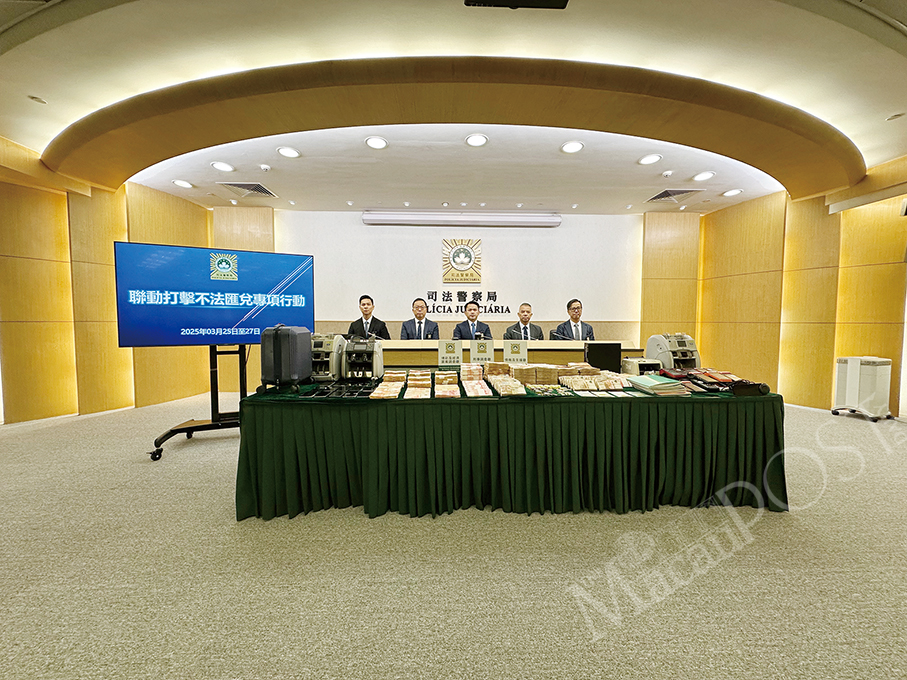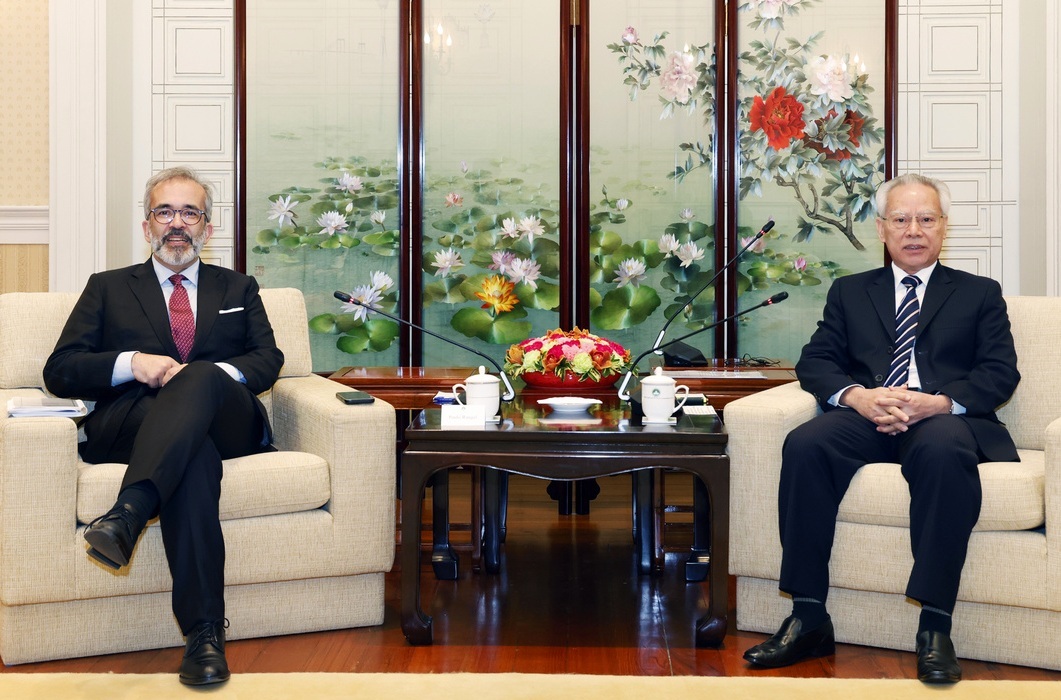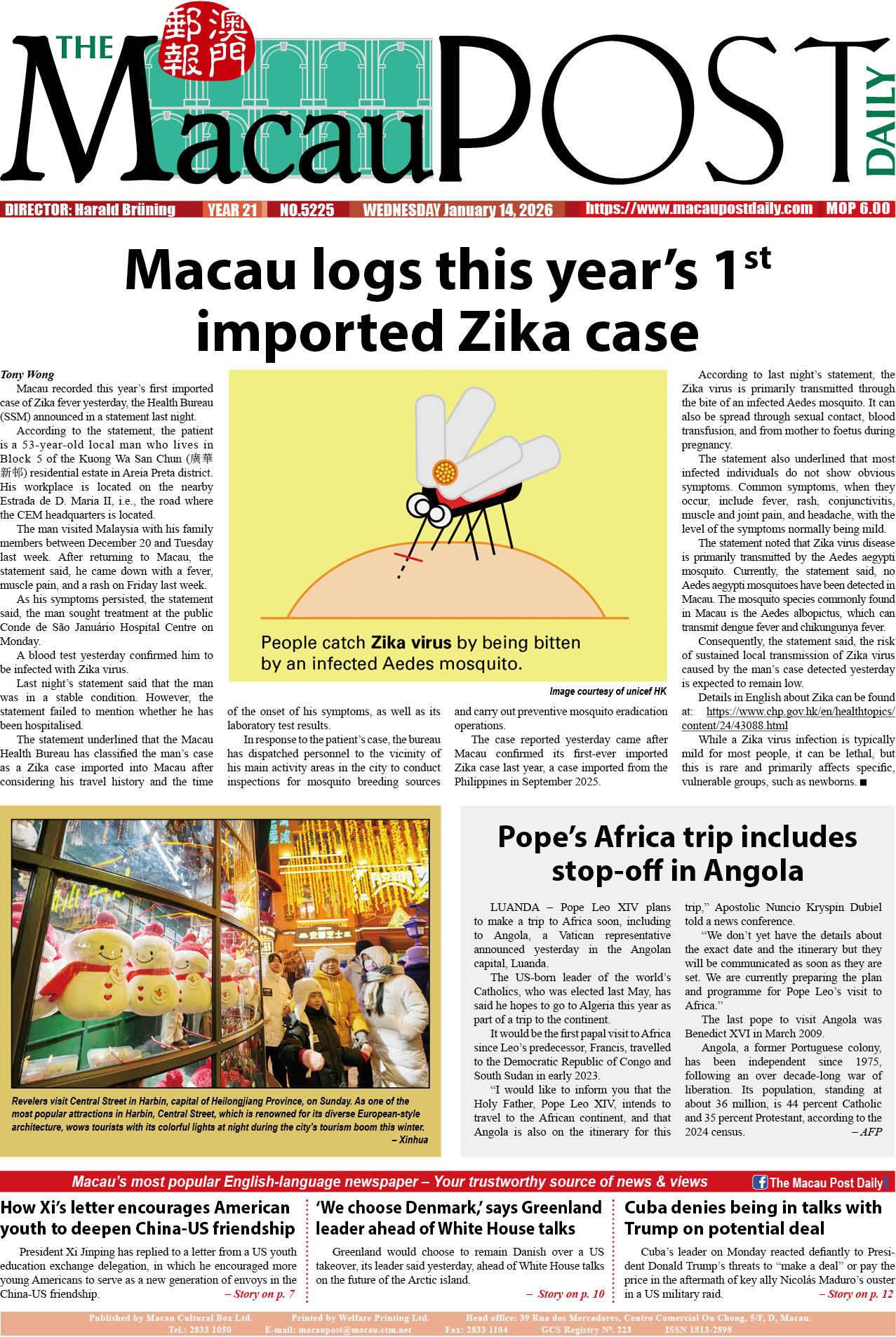The University of Macau (UM) Centre for Macau Studies (CMS) and Department of Economics released yesterday its 2022 Macroeconomic Forecast for Macau, estimating that gross domestic product (GDP) will grow between 3.6 percent and 37.9 percent this year, while exports of services will grow between 5.8 percent and 64.7 percent and the 2022 final revenue of the Macau Special Administrative Region (MSAR) government will stay at around 51.2 billion patacas to 65.9 billion patacas.
According to a UM statement, COVID-19 last year was still not fully under control globally. The total number of visitors to Macau was 7.71 million, only 19.6 percent of the figure recorded in 2019. In the first three quarters of 2021, although the overall economy rebounded from the lowest in the corresponding period of 2020, the growth was of a lacklustre speed. The year-on-year growth was only 27.5 percent. Compared with the same period in 2020, with GDP shrinking by 58.0 percent, the recovery was still far away. Amid an outbreak of the epidemic in Macau at the end of September and early October, the MSAR government further tightened travel restrictions. As a result, the number of mainland visitors dropped substantially during the Golden Week holiday period. Against this backdrop, the Centre for Macau Studies and Department of Economics have announced the 2022 Macau Macroeconomic Forecast, which is based on the Macroeconometric Structural Model of Macau. The results are as follows:
In view of the possible changes in the epidemic and government policies, the research team of the Macroeconometric Structural Model of Macau considered four different scenarios for the number of visitor arrivals in 2022, making allowances for different recovery speeds. The four scenarios are:
Scenario 1: 9.9 million visitor arrivals;
Scenario 2: 13.8 million visitor arrivals;
Scenario 3: 17.7 million visitor arrivals; and,
Scenario 4: 21.7 million visitor arrivals.
Based on the four scenarios, the forecasts of major economic variables are as follows:
The baseline forecast of Macau’s economic growth is 3.6 percent, 15.3 percent, 26.2 percent, and 37.9 percent respectively.
The baseline forecast of growth in the exports of services is 5.8 percent, 26.7 percent, 45.1 percent, and 64.7 percent respectively.
The baseline forecast of growth in private consumption expenditure is about 1 percent in all four scenarios.
The baseline forecast of growth in total gross fixed capital formation is 8.0 percent, 9.3 percent, 11.3 percent, and 12.9 percent respectively.
The inflation rate measured by the GDP deflator or consumer price is 1.8 percent to 2.9 percent.
The growth in median monthly employment earnings is 1.8 percent to 3.8 percent.
The unemployment rate is projected to range between 2.6 percent and 3.0 percent. Excluding non-resident workers (blue-card holders), the unemployment rate for residents is expected to be 3.5 percent to 3.9 percent.
Government revenues (transfer from the government reserves excluded) are expected to range between 51.2 billion patacas and 65.9 billion patacas.
The statement noted that Macau experienced a severe economic contraction in 2020, followed by a lacklustre recovery in 2021. The MSAR government has implemented various policies, especially for small and medium-sized enterprises, to support them through the crisis. However, enterprises are faced with a lack of demand, and without a steady source of visitors, they are not be able to generate a steady income. Therefore, the government still has to face the issue of how to speed up the COVID-19 vaccination process in Macau, so that tourism control measures can be relaxed as soon as possible and tourists can return.
About the Macroeconometric Structural Model of Macau
The Macroeconometric Structural Model of Macau is a quarterly simultaneous-equation econometric model which covers seven aspects of Macau’s economy: consumption, investment, the external sector, prices, government, the labour market, and the monetary sector. It includes 89 equations and 280 variables. Time series data start from the first quarter of 1998 and are updated once new data are available. Its results provide the community with a timely understanding of the state of Macau’s economy and support prudent decision-making. The model was founded by the late James Mirrlees, winner of the Nobel Prize in economic sciences and honorary doctor of social sciences of UM, as well as faculty members in the UM Department of Economics. Project members include Dr Chan Chi Shing, adjunct lecturer in the CMS; Prof Ho Wai Hong, associate professor in the Department of Economics; and Prof Kwan Fung, assistant professor in the Department of Economics. – UM, MPD

This photo released by the University of Macau (UM) shows yesterday’s official presentation of its 2022 Macroeconomic Forecast for Macau. The caption provided by UM did not identify the people appearing in the photo, nor where it was taken.








